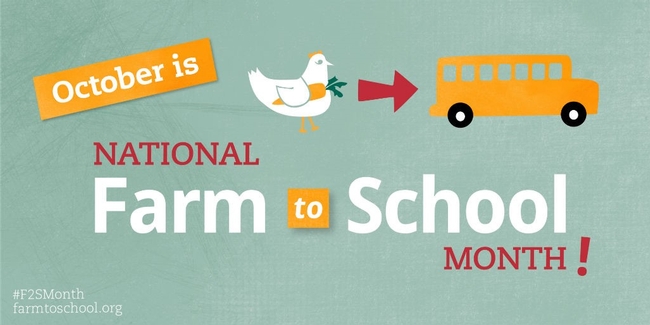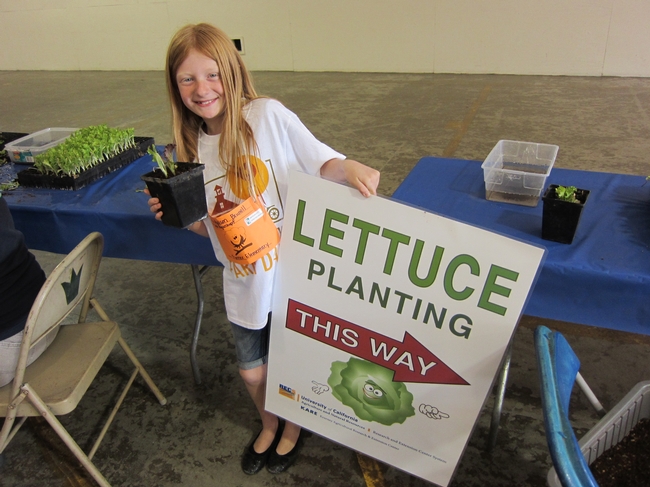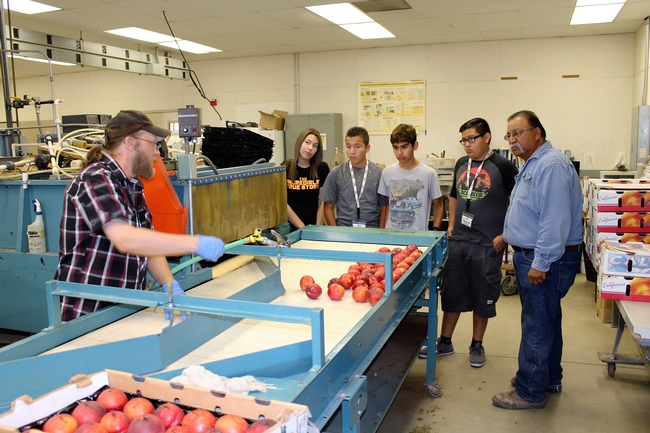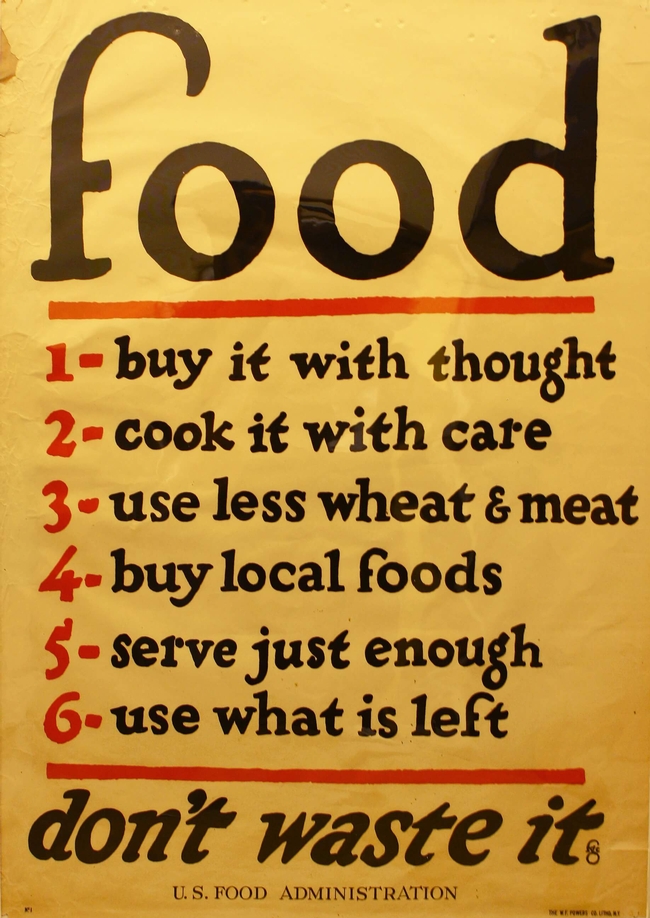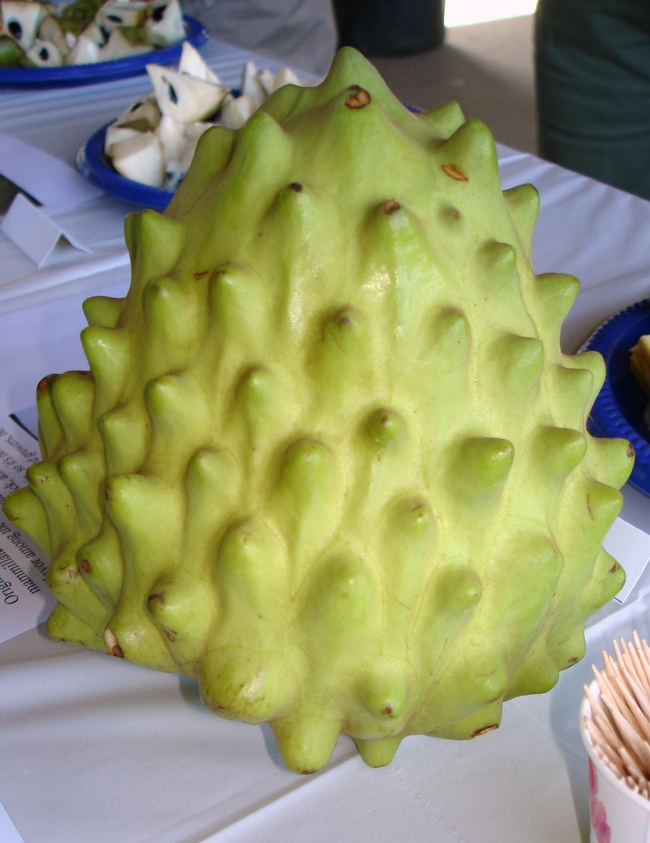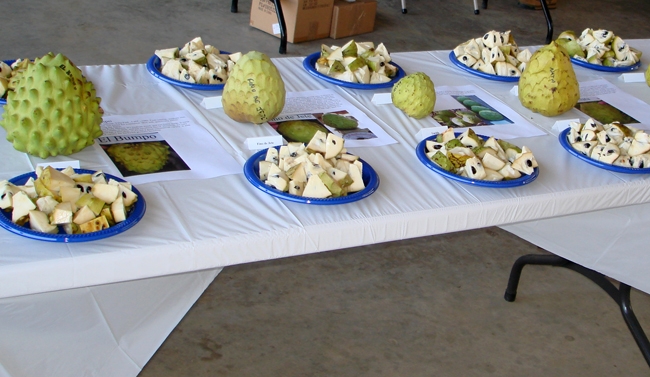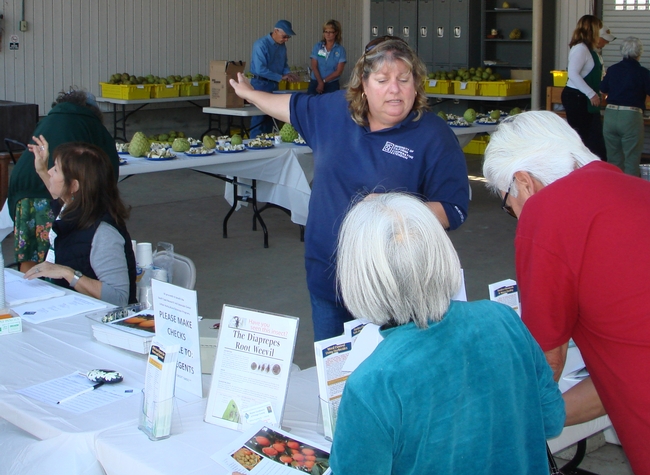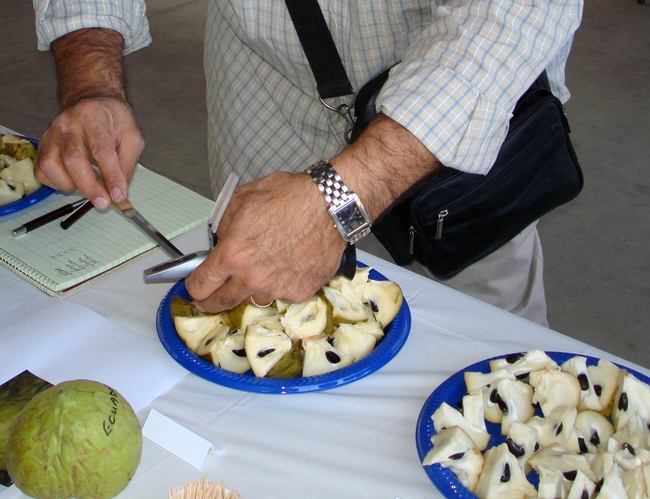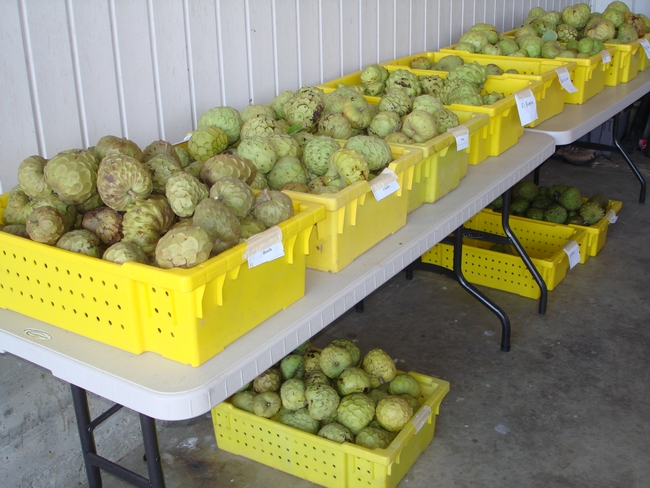Posts Tagged: Master Gardeners
October is National Farm-to-School Month
Schools across the country are celebrating local connections to local food producers in October during National Farm to School Month. Education and outreach activities such as school gardens, cooking lessons and field trips are teaching students about healthy, local foods and food's journey from the farm to their forks.
There are plenty of opportunities for teachers and schools to celebrate and get involved in National Farm to School Month with the University of California Division of Agriculture and Natural Resources (UC ANR). Here are a few ideas to get you started.
4-H youth development
Launch a 4-H Club at your school. The 4-H Youth Development Program emphasizes enrichment education through inquiry-based learning. Core content areas include Healthy Living as well as Science, Technology, Engineering and Math (STEM). Clubs have access to a wealth of curricula materials exploring food, agriculture and natural resources. 4-H also offers the Ag in the Classroom school enrichment program.
Boots on the ground
Invite UC ANR academics and program staff to your career day or science fair or to make a classroom presentation. Specialists from Master Gardeners, Nutrition Education, Project Learning Tree, California Naturalist and other UC ANR programs know how to engage and inspire your students.
Some programs, including Project Learning Tree, offer "train the trainer" professional development workshops that equip educators with the skills and knowledge to teach concepts in their own classrooms. Project Learning Tree also provides free activity guides to teachers who attend their workshops. The guides highlight differentiated instruction, reading connections, and assessment strategies and offer ideas to integrate technology into classroom instruction,
Research and Extension Centers
Take your students on a field trip to a UC ANR Research and Extension Center (REC). The nine RECs in California are focal points for community participation and for active involvement in current and relevant regional agricultural and natural resource challenges.
Visiting a REC offers students a unique opportunity to learn about food production through the lens of applied science research in plant pathology, integrated pest management, conservation tillage, water conservation, development of new crop varieties, and much more. Some RECs also host extended education programs such as Sustainable You! Summer Camp and FARM SMART.
The 2016 National Farm to School Month theme is One Small Step, which highlights the easy ways anyone can get informed, get involved and take action to advance farm to school in their own communities and across the country.
Each week will have a different focus:
- Education (October 3-7)
- Healthy School Meals (October 10-14)
- Farmers & Producers (October 17-21)
- The Next Generation (October 24-28)
Join the celebrations by signing the One Small Step pledge then take your own small step to support healthy kids, thriving farms and vibrant communities this October by partnering with UC ANR.
This story en español.
It's time to get serious about food waste
Here's my take on food waste. It goes back in part to lessons I've learned from studying World War I, when the American government set food conservation goals (along with goals for local food production via Liberty - later Victory - Gardens). I'm a big proponent of both reducing food waste and producing more food in communities via school, home and community gardens. Big point: the World War I poster included in this post has advice we'd be well served to heed today.
"Food waste is both an ethical and environmental issue. It should concern us that we waste nearly 40 percent of the food we produce and purchase in this food-abundant nation.
For an interesting comparative statistic, consider this: our nation produced nearly 40 percent of the fruits and vegetables we consumed on the American home front during World War II in school, home, community and workplace gardens."
Period piece or photoshopped image?
It's an iconic poster from World War 1. Food...don't waste it. The image is regularly shared on Twitter and Facebook.
The original was produced in 1919 by the United States Food Administration, under the direction of the newly appointed food "czar" - Herbert Hoover.
The poster was reissued during World War II. It's been revised in recent years, by individuals and organizations interested in encouraging an ethos incorporating local foods and sustainability.
While I'm the UC Food Observer, I also dabble in the history of wartime poster art. I'm often asked if this is a contemporary mock-up made to look and feel vintage.
It's not a mock-up. It's the real deal, produced 95 years ago, with messages we should embrace today.
History of poster art
The First World War marked the first large-scale use of propaganda posters by governments. Posters, with easy-to-understand slogans and compelling images, made powerful propaganda tools. The government needed to shape public opinion, recruit soldiers, raise funds and conserve resources and mobilize citizens to important home front activities ... including gardening, food conservation and food preservation. In an era before television and widespread radio and movies, posters were a form of mass media. And they appeared in windows and were posted on walls everywhere, in as many languages as were spoken in this nation of immigrants.
If you want to dig a little deeper, the poster art of WWI was influenced by the La Belle Epoque - the beautiful era - named in retrospect, after the full horror of WWI had been revealed. The Art Nouveau movement in France and the rise of modern advertising were also important in shaping how posters were used during wartime. Technical improvements in printing, including a process called chromolithography, facilitated mass production of posters.
The original poster: Yes: 'buy local foods' is rule 4
The original poster has six rules that we'd be well served to follow today. The fourth rule - buy local foods - is somewhat of a surprise to people today, because the notion of buying local seems somewhat modern. But in WWI, the U.S. government encouraged the local production and consumption of food, in part, to free trains to more effectively ship troops and war materiel.
Tackling food waste through preservation: today's Master Food Preserver Program
UC Agriculture and Natural Resources (UC ANR) hosts a UC Master Food Preserver Program. The program teaches best practices on food safety and preservation to volunteers. The extensive training program prepares the volunteers to work in their community educating others on the safe practices of food preservation, including pickling, drying, freezing, canning and fruit preserves.
Thinking about gardening? Do we have resources for you!
UC ANR also has the UC Master Gardener Program, which fields more than 5,000 volunteers in communities across the state. The Master Gardener Program is a national program, housed at the land grant institution in each state, but it's also connected to the USDA. Free gardening resources are available here. Advice to grow by...just ask.
This is an excerpt of an article from a post on the UC Food Observer blog, used with permission.
Resources for beginning vegetable gardeners develop from LA initiative
Home vegetable gardening has always been popular in Los Angeles County. At the UC Cooperative Extension office in Los Angeles, we have a long history of teaching people how to garden through our Common Ground Garden Program. We began to get even more inquiries than usual from beginning gardeners starting three or four years ago. As it turned out, this was part of a larger trend. A national survey showed a 19 percent increase in edible gardening in U.S. households in just one year, between 2008 and 2009. We were excited about this new enthusiasm for home food production. However, based on experience at the community level, we were aware that new gardeners often floundered and might not continue gardening without support and a taste of success.
To address this growing audience of beginning vegetable gardeners, we developed a four-session workshop series, led by seasoned Master Gardener volunteers, to help new gardeners gain the fundamental skills needed to become successful. We call this the Grow LA Victory Garden Initiative. Training groups are kept small, 10 to 15 people, and are largely hands-on. New gardeners learn to prepare soil, plant seeds and transplant seedlings, water effectively and control pests. After training, the new gardeners continue to meet with their group leader informally, encouraging one another and sharing gardening tips.
This initiative has been popular and successful. Since we kicked off “Grow LA” in spring, 2010, we have trained 1,130 beginning gardeners at more than 40 sites around the county, including community gardens, parks, churches, libraries, schools and museums.
One outcome of this project has been the development of a manual for participants, the Vegetable Gardening Handbook for Beginners. Our staff, led by Yvonne Savio and Valerie Borel, compiled the basics of vegetable gardening into a 44-page manual. With support from the Metabolic Studio, a direct charitable activity of the Annenberg Foundation, we were able to print the manual for participants, and translate it into Spanish. Thanks to the efforts of UC ANR News and Information Outreach in Spanish, the Spanish-language version has just become available. Both versions are available free on-line, and we hope others will find them helpful as well.
Vegetable Gardening Handbook for Beginners-English
Vegetable Gardening Handbook for Beginners-Spanish
Fruit that 'tastes like heaven'
Ever tasted a cherimoya?
Upon first taste, many Californians often argue whether cherimoya tastes like a combination of pear, banana, lemon or other familiar fruits. But Isabel Barkman, UC Master Gardener who grew up eating the subtropical fruit in her native Chile, says that’s not quite right.
“I say it tastes like heaven. The cherimoya tastes like cherimoya. It’s creamy. It’s incredible. Nothing tastes like it,” she said.
On Saturday, she helped organize a tasting of 15 varieties of cherimoya at the UC South Coast Research and Extension Center. About 120 local residents, UC Master Gardeners and members of California Rare Fruit Growers attended. Though “heaven” wasn’t an option, participants were given a scale of 1 to 5 to rate the cherimoya varieties based on exterior attractiveness, texture, flavor and overall quality.
Tammy Majcherek, who works at UC South Coast Research and Extension Center and was in charge of the tasting event, explained that the evaluations will help gardeners and homeowners better know how different varieties grow locally, before they consider planting their own.
The center has small orchards of both cherimoya and persimmon that aren’t being used for research projects, but staff members want to continue maintaining the trees and share them with the public, one way or another.
“Because of budget cuts, we've been trying to figure out ways to keep these collections going or to re-propagate some of the best," Majcherek said. "One of the things that we’re in the midst of planning is an urban horticulture extension project with a demonstration orchard, where the public can come and see the various types of trees that they could grow in this area."
Of the 100 or so cherimoya trees currently planted at the center, the best varieties would be included in the public demonstration orchard – and the results of the taste testing will eventually help staff members select which trees to plant.
The 15 varieties at the tasting were Big Sister, Booth, Chaffey, Deliciosa, Ecuador, El Bumpo, Fino de Jete, Ludica, Nata, Orton, Oxhart, Pierce, Santa Rosa, Selma and Whaley.
“I really love the Big Sister variety because the tree is kind of small and is a heavy producer,” she said. “We had a fruit from Big Sister that was the size of my whole head.”
She said that El Bumpo also produces large fruits. The varieties Fino de Jete and Nata can have excellent flavor, and this year Pierce fruits likely had the highest brix, signifying high sugar levels.
Behind the scenes, preparations for the event included harvesting the fruit more than a week ahead of time so that it would ripen.
“We picked 15 varieties the week before, and it was very stressful. Every day I was there wondering, are they going to be ripe? Are they going to be perfect for Saturday? What if they're too hard? What if they're too soft?” Barkman said. “When the cherimoya ripens, you have about two days to eat it because it will go bad really, really quickly.”
Fortunately the fruit were ripe for Saturday’s event, and extra fruit were available for participants to take home to ripen and share.
Majcherek explained this was the first time the center has organized a tasting event for the cherimoya. She was surprised that so many of the participants already knew about the fruit.
“I think they were mostly coming to the tasting just for the love of cherimoya,” she said. “I had no idea that there was such an interest.”
She plans to hold another tasting event for cherimoya next year, as well as a second tasting event for persimmons in the fall.
For more information, UC Cooperative Extension Ventura County has a page about growing cherimoya commercially and the UC Davis Postharvest Technology Center has recommendations for maintaining postharvest quality of cherimoyas too.
Information about future tastings will be posted to the UC South Coast Research and Extension Center website.
Master Gardeners develop garden at Veterans' Home
Beautiful gardens are brimming with color and life at the Veterans’ Home in Ventura. These gardens have been planned, planted and cared for by a group of Ventura County UCCE Master Gardeners and many people in the community.
Flowers and ornamental trees provide color and shade. Raised garden beds are filled with a wide assortment of vegetables to enhance nutrition and dinner salads of residents. An orchard of donated fruit trees has taken root on the west side of the building. Garden lectures provide enrichment for the mind.
An additional vegetable garden and succulent garden are planned.
Started shortly after the home opened, the gardens and the activity they generate provide much joy and nutrition to the Veterans’ who reside at the home. To learn more, or if interested in becoming involved, contact Master Gardener Barbara Hill.
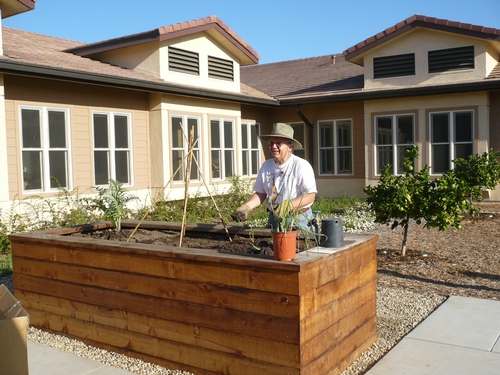
Raised garden beds allow elderly residents to garden without bending over.
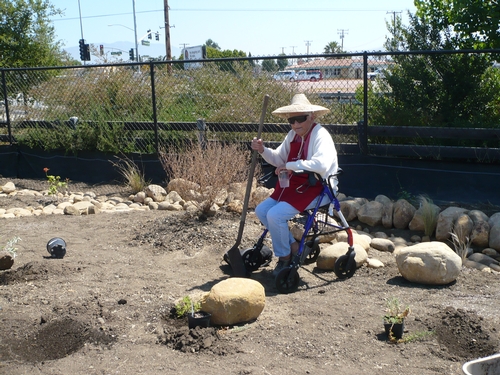
A resident enjoys a 'dry stream bed' in the Veteran's Home Garden.


